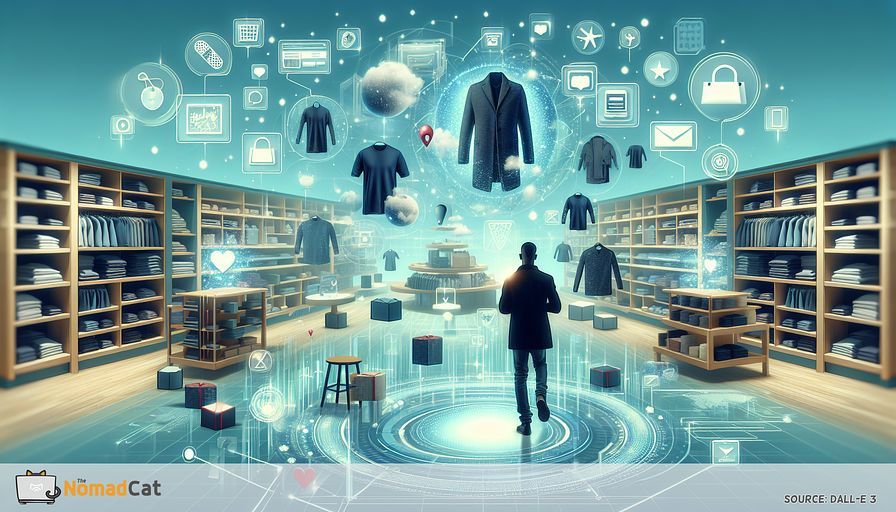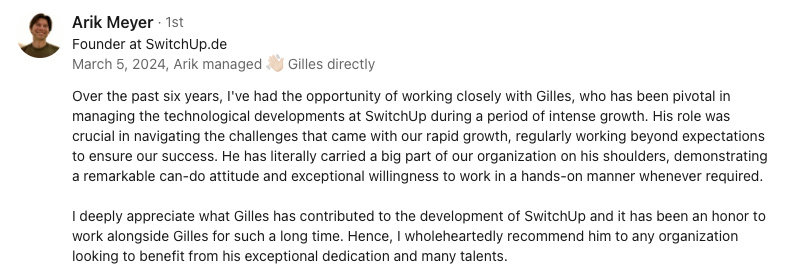Abstract:
Augmented reality (AR) is redefining the retail landscape, offering unique ways to engage customers and enrich their shopping experience. By overlaying digital information onto the physical world, AR allows shoppers to visualize products in their own space, try on clothing virtually, and access detailed product information instantly. This integration of AR into retail not only enhances customer satisfaction but also increases sales by providing a more interactive and informed shopping journey. Retailers adopting AR are setting new standards in personalized shopping, leveraging technology to meet consumer demands for convenience, customization, and experience. Forward-thinking companies are investing in AR to create immersive shopping environments that captivate and engage customers, driving brand loyalty and setting them apart from competitors. As AR technology continues to evolve, the potential for innovative retail experiences is limitless, promising a future where digital and physical retail environments are seamlessly integrated for the ultimate consumer experience.
Transforming retail with augmented reality (AR)
Augmented Reality (AR) is revolutionizing the retail sector, shifting how consumers engage with brands and products. This cutting-edge technology is blending the physical and digital worlds, offering shoppers interactive and enriching experiences. Current trends in AR reveal its growing adoption among retailers aiming to boost customer interaction and satisfaction. By creating immersive shopping environments, AR is making the purchasing process more enjoyable and informative. It is no wonder that AR is redefining the way we shop, enhancing the overall customer journey and bringing a new dimension to retail.
Visualization of products
Augmented Reality (AR) has an incredible ability to help shoppers see products in their own environments. Imagine being able to view a new sofa in your living room or see a piece of art on your wall before making a purchase. This is what AR brings to the table—overlaying digital images onto the actual world around us.
By allowing customers to visualize how items will look and fit in their personal spaces, AR fosters smarter and more informed purchasing decisions. You no longer have to guess whether a piece of furniture will match your decor or if an appliance will fit in your kitchen. This clarity reduces the likelihood of unhappy surprises and the need to return items, resulting in greater customer satisfaction.
The benefits don't stop there. Retailers also see a decrease in return rates, which translates to cost savings and increased efficiency. By providing a preview of products through AR, businesses effectively enhance the shopping experience, ensuring that customers buy with confidence and satisfaction.
Overall, AR's capability to project products into real-world settings is transforming the way we shop. It's not just a novelty; it's a practical tool that helps consumers make better choices and enjoy their shopping experiences more than ever before.
Virtual try-ons
One of the most exciting applications of Augmented Reality (AR) in retail is virtual try-ons. This innovation enables customers to try on clothing and accessories without physically wearing them. Utilizing AR technology, virtual mirrors simulate garments and accessories directly onto a customer's image, providing a realistic preview of how items will look when worn.
The convenience is undeniable. Shoppers can swiftly see how different styles and combinations appear, eliminating the need to visit fitting rooms or wait in long lines. This ease of use not only attracts more customers but also significantly enhances their shopping experience.
Virtual try-ons benefit retailers as well. By offering a more interactive and engaging way to shop, businesses can attract tech-savvy consumers and reduce the return rates associated with online shopping. These AR tools create a win-win situation: customers enjoy a hassle-free shopping journey, while retailers see increased satisfaction and potentially higher sales.
In conclusion, AR-enabled virtual try-ons are transforming how we shop for fashion, making the process efficient, enjoyable, and pleasantly surprising.
Access to detailed product information
Augmented Reality (AR) provides a powerful tool for consumers to access detailed product information instantly. This capability transforms the shopping experience, making it more informative and efficient. With a quick scan of an AR-enabled label or tag, customers can view a wealth of information about a product right on their device screens.
AR interfaces allow shoppers to explore:
- Technical specifications: Detailed descriptions of product features and functionalities help consumers make informed decisions.
- Customer reviews: Instant access to reviews and ratings from other buyers enhances confidence in the product's quality.
- Promotional content: Interactive videos and demonstrations provide a comprehensive understanding of the product's uses and benefits.
This seamless access to information bolsters customer confidence and satisfaction, leading to a more enjoyable shopping journey. Retailers benefit as well, seeing increased engagement and potentially higher sales, as customers are better equipped to make purchase decisions. Ultimately, AR's ability to offer detailed product insights adds significant value to both consumers and businesses, enhancing the overall retail experience.
Enhanced customer satisfaction
Integrating Augmented Reality (AR) into retail dramatically improves customer satisfaction by making shopping more interactive and well-informed. Through AR, shoppers can explore products in a lively and engaging manner, elevating their overall experience and leading to higher contentment levels.
For instance, consider retailers who have embraced AR solutions. According to recent studies, these businesses report a noticeable uptick in customer satisfaction metrics. Shoppers appreciate the convenience and enhanced decision-making capabilities that come with AR-enabled shopping. They can easily access comprehensive product details, try items virtually, and see how products fit into their personal spaces, all of which create a smoother and more enjoyable shopping journey.
Examples highlight AR's effectiveness. Furniture retailers using AR apps allow customers to project virtual models of couches or tables into their living rooms, ensuring perfect matches. Clothing brands offering virtual try-ons enable shoppers to see outfits on themselves without entering fitting rooms. These interactive features not only make shopping fun but also reduce the frustration of returns and exchanges.
Overall, the adoption of AR technology in retail leads to happier, more satisfied customers. The interactive, engaging nature of AR transforms shopping from a routine task into a delightful experience, leading to stronger customer loyalty and increased repeat business.
Increased sales and revenue
Augmented Reality (AR) is making a significant impact on sales and revenue in the retail sector. By enhancing customer interaction and enabling informed purchasing decisions, AR directly boosts conversion rates and overall sales figures.
When customers are able to interact with products through AR, they experience a deeper level of engagement. This heightened interest translates to more time spent in the shopping process, leading to higher chances of making a purchase. By offering immersive and informative experiences, AR encourages customers to explore products more thoroughly, increasing the likelihood of a sale.
The ability to visualize products in real-world settings and try them virtually reduces uncertainty and hesitation. When customers are confident about their choices, they are more inclined to complete transactions, which leads to higher conversion rates. In addition, AR technology's capacity to provide instant access to detailed product information helps shoppers make quick, well-informed decisions, further driving sales.
Retailers benefit from these enhanced interactions. Businesses report higher sales volumes and increased revenue, thanks to the more engaging and satisfying shopping experiences that AR provides. By integrating AR into their strategies, retailers can tap into a powerful tool that not only enriches the customer journey but also significantly contributes to their financial success.
Personalized shopping experience
Augmented Reality (AR) is paving the way for a personalized shopping experience that aligns perfectly with today's consumer expectations for customization. Modern shoppers crave tailored experiences that cater to their unique tastes and preferences, and AR is making this possible.
Retailers can leverage AR to gain insights into individual customer preferences, behaviors, and shopping patterns. By understanding these factors, businesses can offer personalized recommendations that align with each customer's style and needs. For instance, with AR, a shopper might see personalized outfit suggestions based on their past purchases or current wardrobe.
Furthermore, AR can create customized shopping journeys in real-time. Imagine browsing a store through an AR app that adjusts product displays according to your interests, showing you only the items most likely to catch your eye. This bespoke approach enhances the shopping experience, making it more engaging and enjoyable.
The benefits of personalization extend beyond customer satisfaction. Retailers who embrace AR for personalized shopping can expect increased customer loyalty and repeated business, as shoppers are more likely to return to a retailer that meets their individual needs. This, in turn, drives higher sales and boosts overall business performance.
In essence, AR is not just a tool for visualization but a powerful means to offer an individualized shopping experience. This aligns perfectly with the modern demand for personalization, ensuring that every customer feels valued and understood.
Investments in AR technology
Forward-thinking retailers are pushing boundaries by investing in Augmented Reality (AR) technology to secure a competitive advantage. These investments are not just futuristic gimmicks but strategic moves geared towards capturing modern customer expectations and enhancing brand loyalty.
The costs involved in adopting AR technology can vary widely, depending on the complexity and scale of the integration. Initial expenses include:
- Software development: Custom AR applications and platforms tailored to a retailer's specific needs.
- Hardware costs: Devices and equipment necessary to support AR functionalities.
- Staff training: Educating employees on using and optimizing AR tools effectively.
While these costs may seem substantial, the potential Return on Investment (ROI) can be impressive. Businesses report increased engagement, improved customer satisfaction, and higher sales volumes. Providing immersive and personalized experiences not only captures consumer interest but also encourages repeat purchases and brand loyalty.
Moreover, these investments offer a way to differentiate a brand in a saturated market. As AR becomes more integrated into the shopping experience, brands utilizing this technology can stand out by offering unique, engaging, and informative customer interactions. This differentiation reinforces brand presence and fosters a loyal customer base.
Ultimately, investing in AR technology is a smart move for retailers looking to innovate and thrive in a competitive landscape. The blend of enhanced customer experience, potential financial gains, and brand differentiation makes AR a worthwhile investment.
Immersive shopping environments
Augmented Reality (AR) is transforming traditional retail spaces into dynamic, immersive shopping environments that resonate deeply with consumers. By creating memorable and engaging experiences, AR helps retailers build brand loyalty and attract repeat customers.
Imagine walking into a store where virtual elements seamlessly blend with physical products. Through an AR app on your smartphone, you might watch a virtual fashion show featuring the latest clothing line or see animations demonstrating new product features. These interactive experiences captivate customers' attention and make shopping not just a necessity but an enjoyable activity.
Several brands have successfully implemented AR to create such environments:
- IKEA: With their AR app, customers can place virtual furniture in their homes to see exactly how it fits.
- Sephora: Their Virtual Artist helps shoppers try on makeup virtually, making it easier to find the perfect shade.
- Lowe's: Their AR app allows users to plan and visualize home improvement projects in their own spaces.
These implementations show how AR can transform shopping into an interactive and enjoyable journey, increasing customer engagement and fostering brand loyalty. By providing unique and immersive experiences, retailers not only attract more customers but also encourage them to return, driving long-term business success.
Seamless integration of digital and physical retail
Augmented Reality (AR) is effortlessly bridging the gap between digital and physical retail, creating a hybrid shopping experience that meets contemporary consumer needs. This blending of virtual and real-world elements provides a highly interactive and convenient way for customers to shop.
Picture a shopper navigating a store equipped with AR. Using their smartphone, they can instantly access detailed product information, see virtual guides, or even join live, interactive promotions. This creates a unique synergy where online and offline shopping merge to offer the best of both worlds.
AR enables retailers to offer features such as:
- In-store navigation: An AR app guiding customers to specific products or sections within the store.
- Enhanced product displays: Virtual displays and demonstrations that provide a deeper understanding of product functionalities and benefits.
- Seamless checkout: Streamlined checkout processes via AR, reducing wait times and enhancing convenience.
Moreover, the integration of AR helps retailers track customer preferences and behaviors across both digital and physical channels. This data allows for personalized offers and tailored shopping experiences that resonate with individual consumers, further blurring the lines between online and offline interactions.
The future of retail lies in this seamless integration, where AR acts as a powerful catalyst for creating cohesive and engaging shopping journeys. Whether in a store or online, AR ensures that customers enjoy a rich, comprehensive experience that surpasses traditional shopping methods.
The future of retail: embracing AR
Augmented Reality (AR) is carving new paths for the retail industry, blending physical and digital elements to offer enriched, interactive experiences. From visualizing products in real-world settings and virtually trying on items to accessing in-depth product information, AR satisfies both curiosity and convenience. It enhances customer satisfaction, drives sales, and personalizes shopping journeys. Investments in AR technology create immersive environments and bridge the gap between online and offline shopping. Retailers seizing the potential of AR are set to revolutionize consumer engagement, crafting unforgettable shopping experiences.
You might be interested by these articles:
- Revolutionizing Retail with Augmented Reality
- Transforming Shopping with AR Tech
- Augmented Reality: Revolutionizing Retail and Reducing Returns





